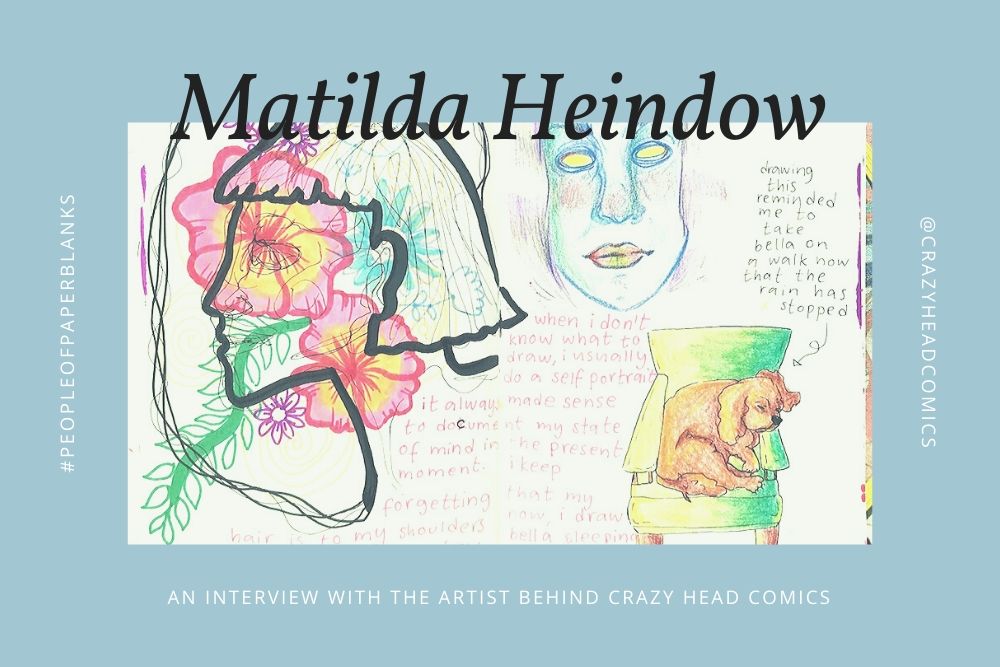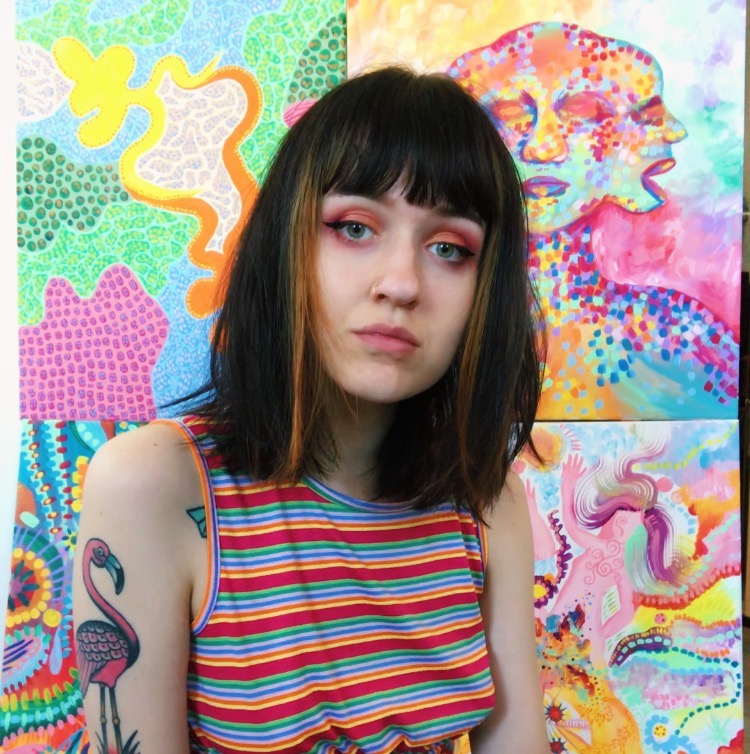
Sometimes at the Endpaper Blog we get the unique opportunity to offer a platform to creative journallers from around the world. We’ve recently partnered with Swedish artist and mental health advocate Matilda Heindow, creator of @crazyheadcomics, where she publishes her mental health awareness art striving to create a community of openness and vulnerability, and to destigmatize mental illness.
1. For readers who haven’t had a chance to check out Crazy Head Comics’ Instagram feed, could you tell us a little about it?
My Instagram is an amalgamation of mental illness education, personal experiences of living with mental illness, colorful art and charts, confessional writing, art journal, and online support community. It’s mixed in tone, some posts are vulnerable and serious, others are comical and silly. It’s a little nook of Instagram where you can come to learn more about mental illness or find other people who are going through similar struggles as you.
2. What inspired you to create the account?
I had just started digital art and was going through a lot with my mental health at the time. I decided to combine the two, and make an Instagram page where I chronicle my mental health journey through art.
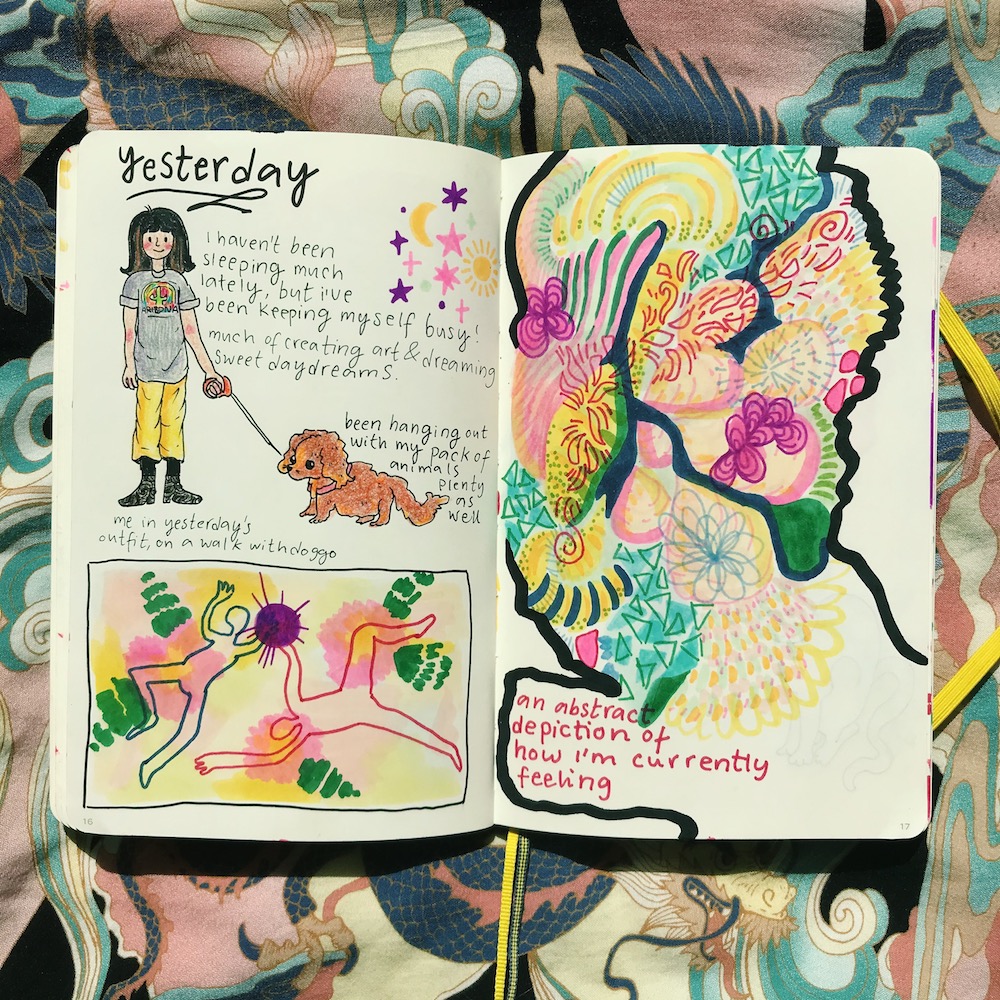
3. You are doing an important job advocating for mental health. Every day you reach a lot of people, inspiring and helping them along the way. What has been the biggest reward?
The biggest reward has absolutely been being able to bring together a community of people. It has been wonderful to see people all over the world who come to my page to partake in important conversations about mental health. It’s been healing for me to open up and be vulnerable online and receive so much support and empathy. I have learnt a lot from the people who engage with my page and have gotten to know a lot of people I consider dear friends now.
4. Have there been any challenges?
Yes, absolutely. Every public figure, celebrity and influencer receives hate and harassment online, and that was very difficult in the beginning. My account grew very fast and it wasn’t long before I started receiving negative attention. I knew mental illness is a taboo subject, but I didn’t realize how controversial of a topic it is. The vast majority of feedback I get is overwhelmingly loving and positive, so although the hate sticks out, it is a small price to pay for all the joy it has brought me.
5. Tell us about your art journal. How has drawing and writing helped you?
I’ve kept art journals for years now. I used to keep a journal and a sketchbook, but when I realized I could combine them and save some space in my backpack I was sold. I like art journals because it’s less pressure and more private than a sketchbook, since a lot of people are curious and ask to look inside if they see your sketchbook. Journaling has helped me process emotions and it’s been a great tool in learning to let go of past troubles. And using art as expression of emotions is great for those days where you cannot put words to what you’re feeling. It’s a catharsis for me, as well as a nostalgic thing for me to look back on in the future.
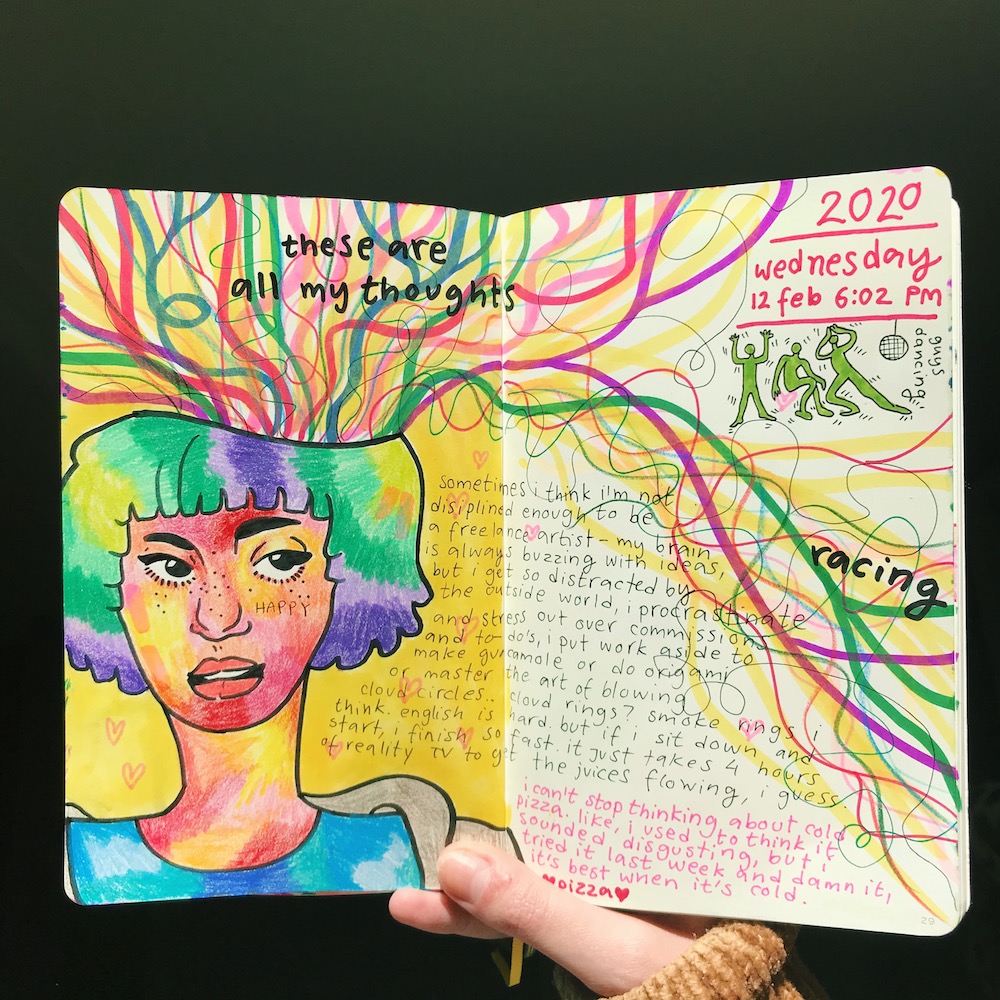
6. Have you always been into drawing?
Yes, it’s been my favorite thing to do for as long as I can remember. I always knew I wanted to be an artist, it was a lifelong dream and younger me would have been so happy to see that I’m still pursuing it today.
7. How would you define your style?
It’s definitely always evolving, and I have different styles for different mediums. An overlapping theme is using lots of color. My digital art style is a bit cartoony, with black bold outlines, I use a lot of floras and I have a self-insert that I communicate through. With painting, I enjoy abstract expressionism, textures and playing with shapes. I have bipolar disorder and during my hypomanic episodes, my art goes especially psychedelic, surreal and spiritual. I am quite fast, so the art never comes out perfectly symmetrical, but it’s a stylistic choice I am very fond of. I think imperfections give art character.
8. Do you have a particular medium you prefer to work with?
Acrylic paint on canvas is my go-to, since oil paints take too long to dry, and I am quite impatient and prefer to finish my paintings in a few days. The most fun medium is ink on huge sheets of rice paper, with lots of water. It almost paints itself, with a little guidance from my hands. Very therapeutic and I really recommend that type of paper – the texture is to die for.
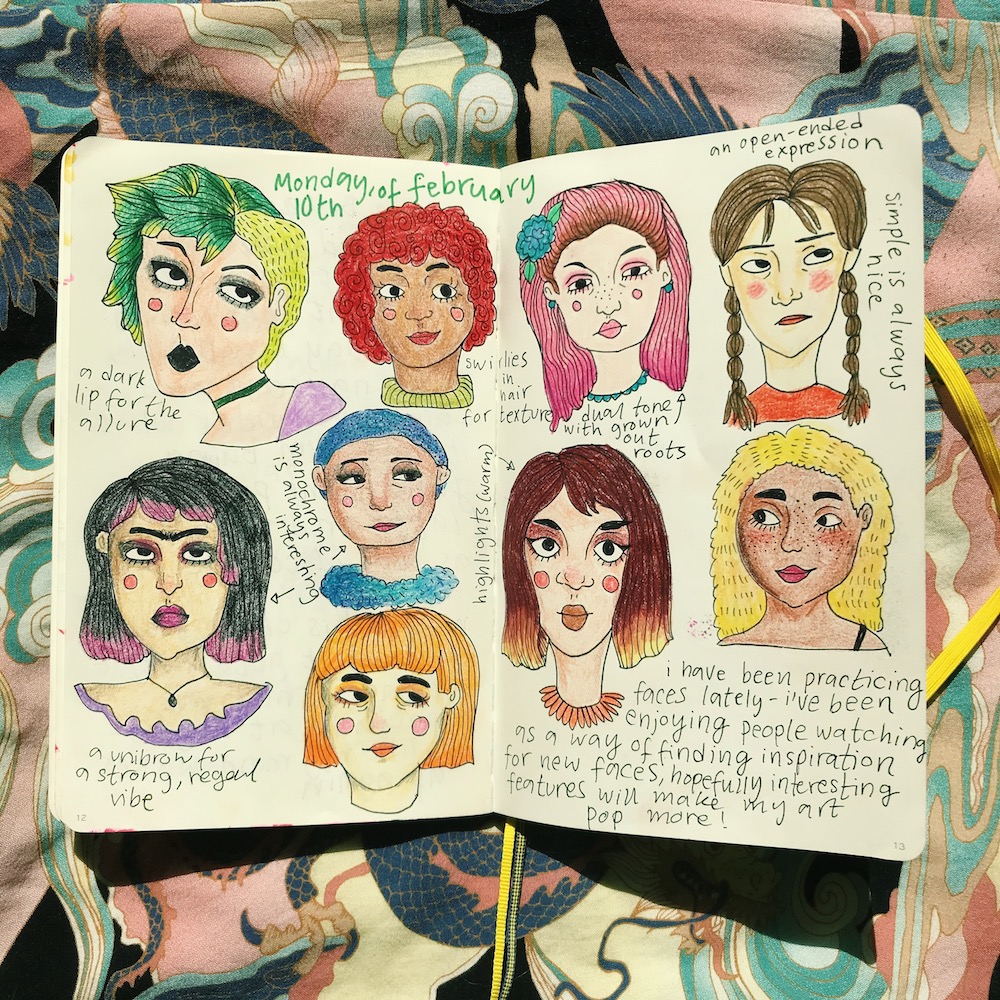
9. Other than drawing, what are your passions in art or life?
I have lots of passions; I think that’s the key to a happy life. I love thrifted fashion, analog photography, vegan baking and cooking, mental health advocacy, writing, hiking, hanging out and traveling with my group of friends, watching horror films, learning sign language, and more. The two biggest joys in my life are definitely creative pursuit and bonding with my favorite humans.
10. Any advice for our readers on using art to cope with mental health issues?
Try it out! It doesn’t necessarily have to be visual art – it can be sculpting, crocheting, dance, photography, making collages, writing songs or poems or stories. I think we can all do with a creative pursuit in our lives. And don’t be so hard on yourself! Art is amazing because there really is no “right or wrong” in my opinion. Let go of that pressure of having it be perfect, because it doesn’t have to be perfect. Sit down for ten minutes with some pens and crafting supplies, put on music or a podcast and make something just for fun. Art can really be a saving grace in dealing with mental illness. As Thomas Merton said, “Art enables us to find ourselves and lose ourselves at the same time.” I have found that to be very true.
You can find out more about Matilda’s work here: @crazyheadcomics
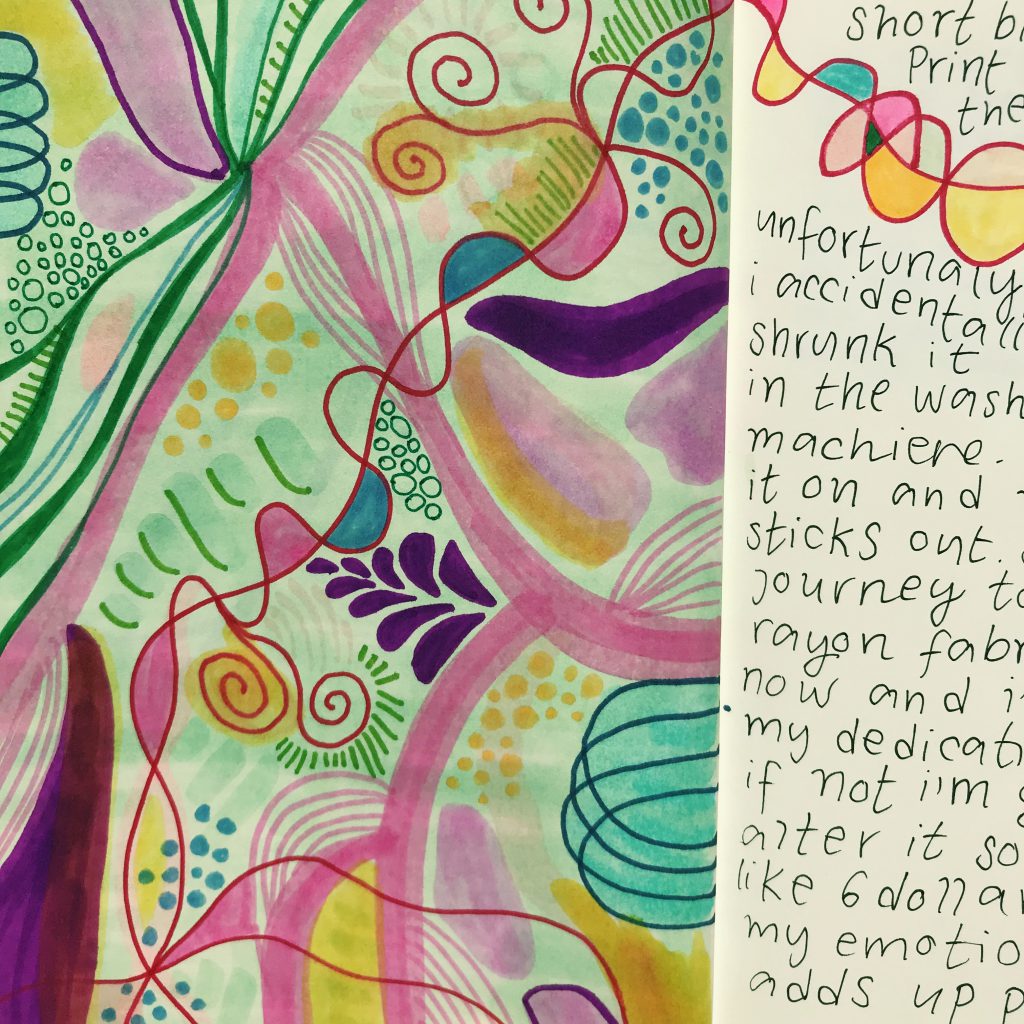
Mental health affects us all. If you or someone you know needs help, you are not alone.
Call 1-800-273-8255 for the National Suicide Prevention Lifeline in the United States or 1-833-456-4566 for Crisis Services Canada.
Outside of North America, please visit the International Association for Suicide Prevention for a database of resources: www.iasp.info.

